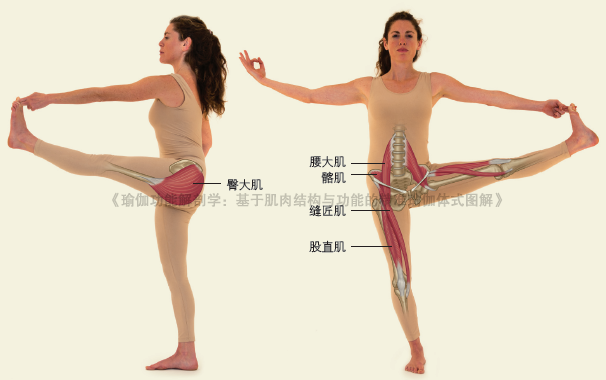Hip flexibility is very important for human activities.

No matter walking or running, hip joint participation is indispensable.

The flexible hip helps to improve sports performance, reduce injuries and make the human body more stable and smooth in daily life.

The structure chart below can help us better understand the hip joint.

The iliac bone of the hip is part of the pelvis including the acetabulum (acetabular fossa).

This groove is connected with the femoral head (pestle) to form this joint.
In architectural terms, the pelvis is the keystone, and the two femurs are the supporting columns of the arched structure.
This will keep the hip joint stable and balanced, and the structure is very complete.
The muscles responsible for controlling the hip extend from the pelvis to the femur, and some even exceed the knee joint.
For example, the muscles in the front of the thigh can bend the hip joint, the muscles outside the thigh are responsible for abduction, the muscles behind the thigh control extension, the muscles inside the thigh control adduction, and the gluteal muscles participate in the extension of the hip joint.
Here are six yoga poses to help you activate and relax your hips, so as to reduce the risk of injury and relieve chronic pain.
These exercises are mostly carried out on the mat and can be completed at rest.
Let’s practice together! Standing one leg extension and alignment: spine extension, shoulder stability, hip flexion, external rotation, knee extension, ankle dorsiflexion.
Stand on one leg with one side of the body in a straight line from head to foot.
Half bridge (hip flexor extension) movement and alignment: spinal hyperextension, shoulder stability, hip extension, knee flexion.
The shoulder is firmly fixed to the floor and the knee is above the feet.
Latch movement and alignment: lateral bending of spine, rotation of shoulder blade belt, abduction of shoulder joint, abduction of hip joint, flexion and extension of knee joint.
The body is on the coronal plane.
Supine spine torsion and alignment: spine rotation, shoulder abduction, hip flexion, adduction, knee flexion.
The shoulder blades remain fixed to the ground while the spine lengthens.
Bow movement and alignment: spinal hyperextension, shoulder blade belt retraction, shoulder hyperextension, hip extension, knee bending and re extension.
The body is arched like a “bow”, and the shoulder joint is in line with the knee.
Infantile movement and alignment: spine bending, shoulder girdle supination (arms forward extension), shoulder bending, hip and knee flexion, ankle plantar flexion.
The body is in the sagittal plane-.

